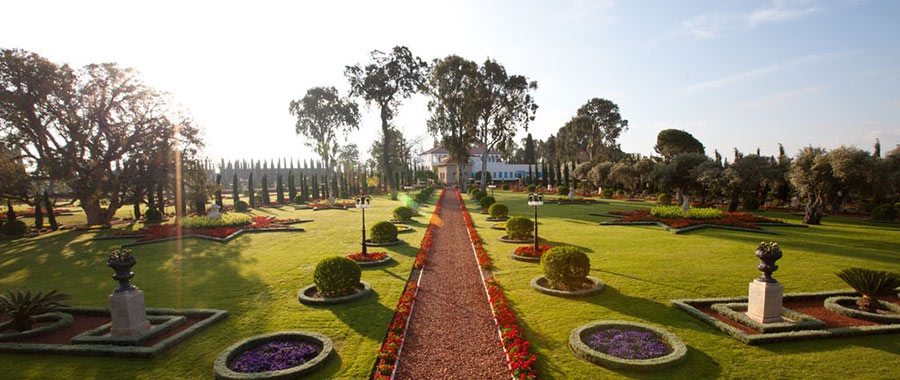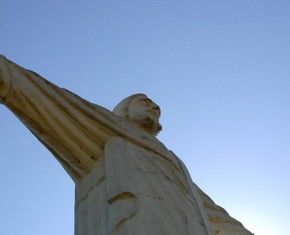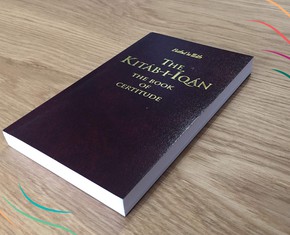The views expressed in our content reflect individual perspectives and do not represent the authoritative views of the Baha'i Faith.
Baha’is believe that the advent of Baha’u’llah has fulfilled the past prophecies of many of the world’s great Faiths.
As just one example, Baha’u’llah fulfills five key prophecies by Jesus Christ, according to Shoghi Effendi: (1) “Prince of this world”; (2) “Comforter”; (3) “Spirit of Truth”; (4) “Lord of the Vineyard”; and (5) “Son of Man” who “shall come in the glory of His Father.” – God Passes By, p. 95.
These are not the only Christian prophecies that Baha’u’llah fulfilled, according to Baha’i belief—but Shoghi Effendi’s constellation of those five messianic titles, based on prophecies by Jesus Christ himself, deserve some special attention and focus.
Baha’u’llah’s messianic identifications as the “Comforter,” “Spirit of Truth” and “Lord of the Vineyard” were previously presented in this series, in parts 33, 34, and 37. Baha’u’llah’s messianic role as the “Lord of the Vineyard” is somewhat unique in that Baha’i interpretation transforms Jesus’s parable into a prophecy.
Even more remarkable: Baha’u’llah’s association with the “Son of Man” who “shall come in the glory of His Father” is predicated on both literal as well as symbolic interpretations.
This fifth of five messianic titles that Shoghi Effendi connected with Baha’u’llah is based on the following Biblical prophecy of Jesus, which exists in three parallel versions:
Whosoever therefore shall be ashamed of me and of my words in this adulterous and sinful generation; of him also shall the Son of man be ashamed, when he cometh in the glory of his Father with the holy angels. – Mark 8:38.
For the Son of man shall come in the glory of his Father with his angels; and then he shall reward every man according to his works. – Matthew 16:27.
For whosoever shall be ashamed of me and of my words, of him shall the Son of man be ashamed, when he shall come in his own glory, and in his Father’s, and of the holy angels. – Luke 9:26.
Of these three parallel texts, Matthew’s version may be closest to the original saying of Jesus, because it is more concise and therefore less likely to have been embellished by the gospel writer. This is not to say that one version of a particular saying of Jesus is more “true” than the others. Rather, it is simply a recognition that some kind of editing process was at work by the writers of Matthew, Mark and Luke—the three “synoptic” or “seen together” Gospels.
In Matthew, God is most frequently called “Father.” In his prayers, Jesus most often addresses God as “Father.” “Father” is a metaphor, of course, and not literal. This is necessarily so because the term “father” implicates sexual reproduction which, of course, would not apply to God. According to one biblical scholar, this is why the Bible abounds in metaphors:
Man’s primary experience is, of course, his natural life, and this determines the tendency … to represent the relatively more “cultural” in terms of the more “natural.” That is why when religious speakers feel short of words to express more abstract ideas, the straining of linguistic resources would lead them to the employment of metaphors, of words originally associated with the natural experience but now endowed with new meanings. The Bible, in a sense, is an agglomeration of thousands of metaphors. Referring to God, the most important figure in Christian writings, numerous metaphors are used: God is a shepherd; God is a fountain of living water; God is a vine-keeper; God is Rock; and, of course, God is Father. – Liangyan Ge, “Father/father in Matthew,” Paragraph: A Journal of Modern Critical Theory, Vol. 15, No. 3 (November 1992, Oxford University Press): pp. 261–278 (p. 266).
So “Father” is a metaphor for God. Taking this into account, we could paraphrase Matthew 16:27 as follows: “For the Son of man shall come in the glory of God [“his Father”] with his angels; and then he shall reward every man according to his works. In other words, when Jesus refers to the “glory of his Father,” this simply means the “glory of God.”
So what does the “glory of God” signify? It’s important to understand this part of the prophecy, because Jesus’s return is expressed in a particular mode, by Jesus’s use of the preposition, “in” — which, here, can be understood as “how.” In other words, how will Jesus return? According to Matthew 16:27, the answer is simple: “in the glory of his Father with his angels.”
Because Christianity does not believe in reincarnation, we can rule out Christ’s literal bodily return for the simple reason that the return of the historical person Jesus Christ would be reincarnation. Whatever one may believe about whether or not Christ was the “incarnation” of God, it would not be consistent with Christ’s teachings or Christian doctrine generally to understand Christ’s return as the actual reincarnation of the historical Jesus.
That means we need to seek another explanation for the meaning of this prophecy.
So what does the “glory of God” signify? This term is used throughout the Bible. In the New Testament, Revelation 21:23 is a good example:
And the city had no need of the sun, neither of the moon, to shine in it: for the glory of God did lighten it, and the Lamb is the light thereof. – Revelation 21:23.
This verse is based on two passages from the Old Testament: Ezekiel 43:2 and Isaiah 60:1–2, 19, according to Paul B. Decock, “The Scriptures in the Book of Revelation,” Neotestamentica 33.2 (1999): 373–410 (382). The passages from Ezekiel and Isaiah are as follows:
And, behold, the glory of the God of Israel came from the way of the east: and his voice was like a noise of many waters: and the earth shined with his glory. – Ezekiel 43:2.
Arise, shine; for thy light is come, and the glory of the Lord is risen upon thee.
For, behold, the darkness shall cover the earth, and gross darkness the people: but the Lord shall arise upon thee, and his glory shall be seen upon thee. . . .
The sun shall be no more thy light by day; neither for brightness shall the moon give light unto thee: but the Lord shall be unto thee an everlasting light, and thy God thy glory. – Isaiah 60:1–2, 19.
The “glory of God,” first and foremost, represents the presence of God. Both Revelation 21:23 and Ezekiel 43:2 have been applied to Baha’u’llah, whose name, in Arabic, literally means the “Glory of God.” So the passage, “for the glory of God did lighten it,” has been interpreted by Baha’is to mean: “for Baha’u’llah did lighten it.”
So, here, there’s both a literal as well as metaphorical interpretation, since obviously Baha’u’llah is not literally the heavenly city (often referred to as the “New Jerusalem”) envisioned in Revelation 21. The “Lamb” has been interpreted, not as Jesus Christ, but as the Bab, Baha’u’llah’s herald.
Baha’u’llah himself refers to Revelation 21:22–23:
Say: This day the City of God hath appeared and can be witnessed in perfect adornment. This is the City in which the God of all peoples hath appeared. Ponder these words of John, who announced the great and sacred City and said: “And I saw no temple in it; for the Lord God Almighty and the Lamb are the temple of it. And the city had no need of the sun, neither of the moon, to shine in it; for the glory of God [Arabic: Bahá’u’lláh] did lighten it, and the Lamb is the light of it” (Rev. 21:22–23). – Baha’u’llah, provisional translation, qtd. in Christopher Buck, “The Eschatology of Globalization: Baha’u’llah’s Multiple-Messiahship Revisited.” Studies in Modern Religions, Religious Movements and the Babi-Baha’i Faiths. Edited by Moshe Sharon. Numen Book Series: Studies in the History of Religions, 104. Leiden: Brill Academic Publishers, 2004. Pp. 143–178 (p. 150).
On this passage, Baha’i scholar Stephen Lambden observes: “Baha’u’llah cites this verse in Arabic exactly as it was printed in the London 1671 (1858) edition of the William Watts Arabic Bible for Eastern Churches.”
Here, what is meant by the “God of all peoples hath appeared” is that the presence of God was manifested in the advent of Baha’u’llah, who, in Baha’i terms, is referred to as a “Manifestation of God”—a term that makes clear that Baha’u’llah is not an incarnation of God.
So, in Baha’i belief, Baha’u’llah is both the “Glory of His Father” (Matt. 16:27) and the “Glory of God” (Rev. 21:23), where both titles are equivalent and have one and the same messianic meaning.
















Comments
Sign in or create an account
Continue with Googleor